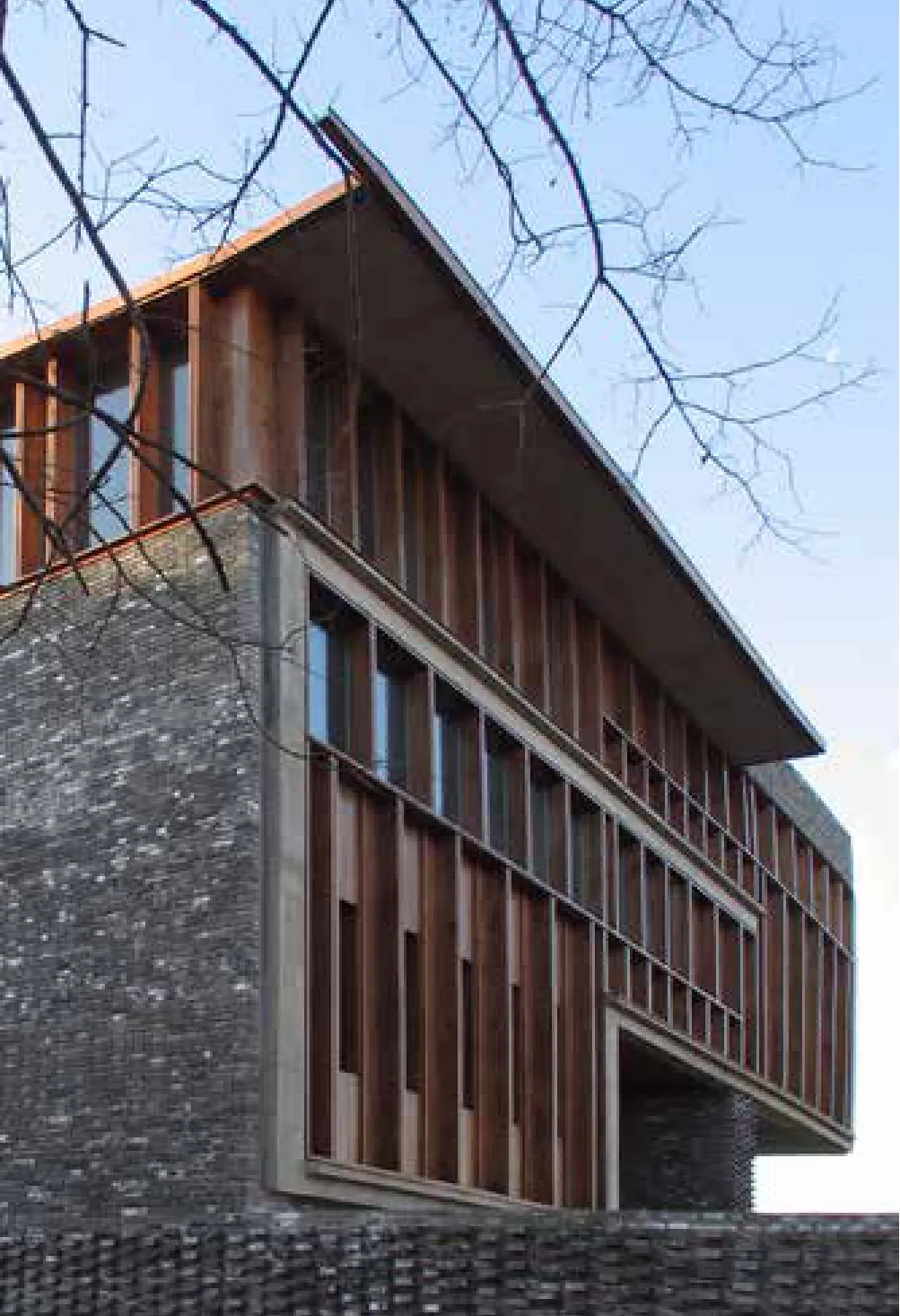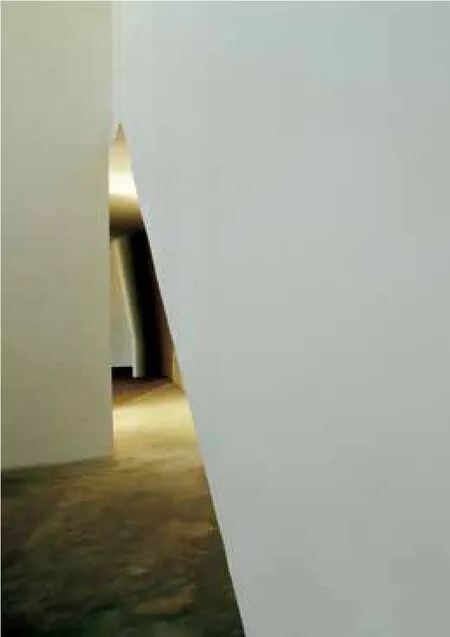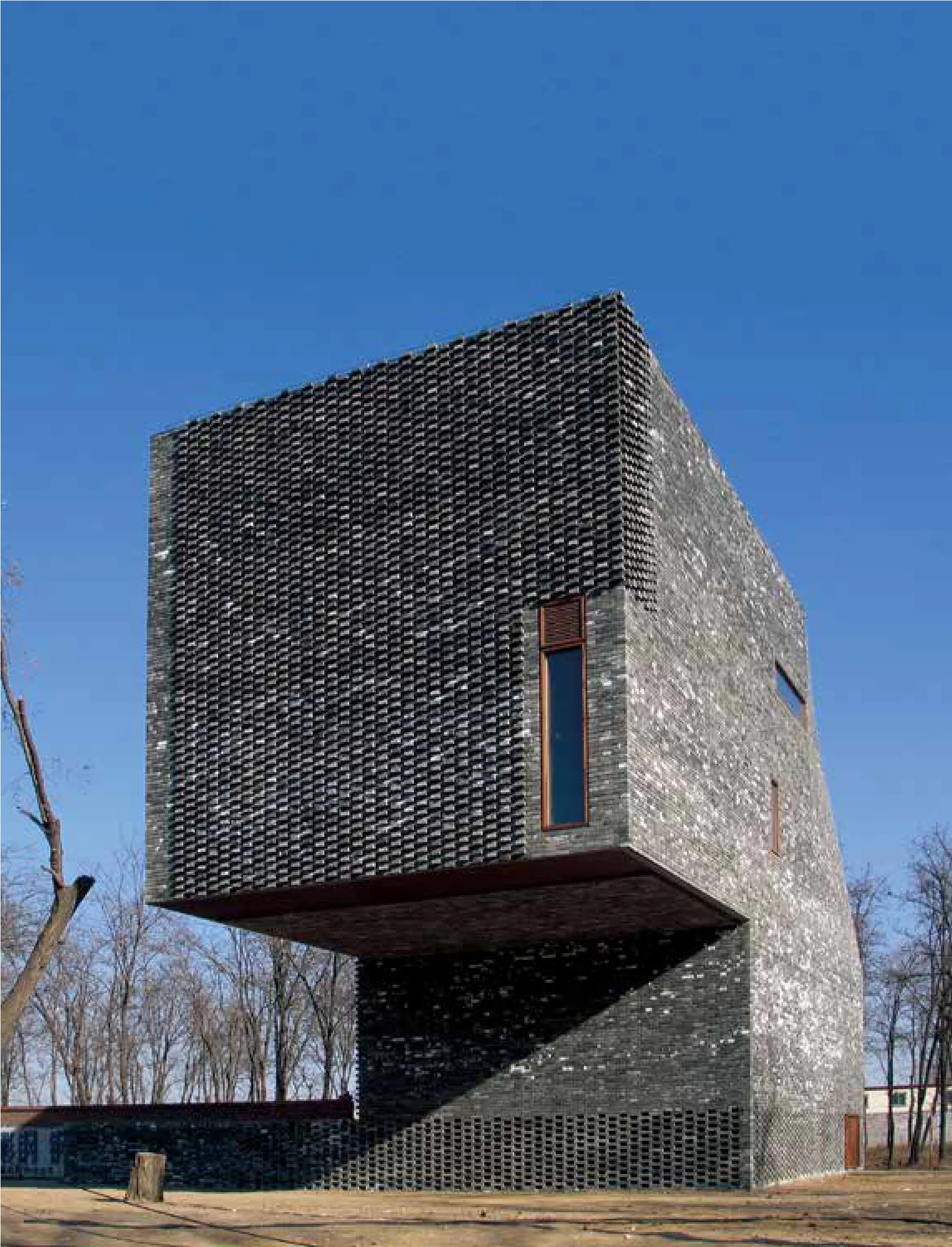通州门楼中国北京
2018-04-27NaderTehrani,MonicaPoncedeLeon,KristenGiannattasio等
设计负责人:Nader Tehrani & Monica Ponce de Leon
项目协调:Michael Tunkey, Timothy Clark
设计团队:Kristen Giannattasio, Tali Buchler, Hansy Luz Better,Christine Mueller, Achille Rossini, Jeff Asanza, Julian Palacio
Principals: Nader Tehrani & Monica Ponce de Leon
Project Coordinators: Michael Tunkey, Timothy Clark
Project Team: Kristen Giannattasio, Tali Buchler, Hansy Luz Better, Christine Mueller,Achille Rossini, Jeff Asanza, Julian Palacio
在距北京三十英里的地方,一个由200多名具有国际知名度的中国艺术家组成的社区,缺乏一个互动吸引点、艺术展示区或接待场所。一个由艺术家、评论家和代理人组成的财团收购了一处地产,准备为通州的艺术组织建设一个这样的项目。这是一个分期项目,已完工的首期是门楼,包括定居在此的艺术家们的住房和工作室。项目场址被一堵现有的砖墙隔开,一边是一片树林,另一边是一片贫瘠的工业场地。虽然艺术中心位于工业场地一侧,但该方案将主要公共庭院面向树林,在砖墙上拆除部分墙体,以便形成框景。该建筑复合体是围绕着一系列密集的庭院布置的,这些庭院组织了到达空间、服务空间、雕塑空间和集会空间——以及私人专享的户外空间。连接庭院的一系列小巷,布置为裂缝和缝隙形式。按照客户的要求,规划布局是为了实现相互矛盾的目标,即居民之间最大限度的互动以及一定程度的隐私。水循环、排水和照明的规定,在解决传统建筑问题基础上,为创造新空间和寻求变化提供了机会。通过计算通道所需的高度空间、楼梯必要踏面和踏步竖板之间的关系,以及随后将任何其他浪费的相邻空间降到最低,这些建筑物被视为经过缩减包装或真空成型的砖砌结构。在中国这种设计技巧与给定的预算和经济状况可能存在着至关重要的关系。

Thirty miles from Beijing, a community of over 200 Chinese artists of international recognition lacked a public institution or space that served as a magnet for interaction, a place for the presentation of art, or a setting for receptions. A consortium of artists, critics and agents acquired a property to put together a program for Tongxian Art. A multi-phase project, the completed Phase 1 is the gatehouse, which consists of housing and studio space for artists-in-residence. The site is divided by an existing brick wall, which separates a grid of trees on one side from a barren industrial field on the other. While the art center is located on the industrial side, the scheme orients the main public court towards the trees, making a cut into the brick wall to frame a view of the landscape. The complex is configured around a dense series of courtyards that organize spaces of arrival, service,sculpture, and congregation –as well as private outdoor spaces. A series of alleyways, configured as cracks and slots, connect the courtyards. As mandated by the client, the layout of the program is organized to achieve contradictory aims: maximum interaction between the inhabitants, and a level of privacy. Mandates of circulation, drainage, and light provided an opportunity to invent new spatial and tectonic variations on traditional architectural problems. By calculating the necessary headroom for passageways, the necessary tread and riser relationship of the stairs, and the minimization of any other subsequent wasted adjacent space, the buildings are conceived as brick monoliths that have been shrink-wrapped or vacuum formed into shape. The techniques adopted for this design bear a critical relationship with what was possible with the given budget and economy in China.






